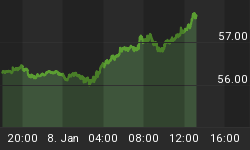Over the past few years, we've seen the beginning of a move away from paper assets and towards tangible investments and stores of value.
Check the news and you'll see the trend is clear. Wealthy investors, wary of the stock market and the machinations of Wall Street salesmen, are embracing "alternative investments" such as hedge-funds, commodities and commodity-related investments, and art. Economic growth in Asia is leading to increased demand for time honored stores of wealth. In India and China, the burgeoning middle classes will step up their purchases of precious metals and increasingly, diamonds. Global investment demand for gold has grown and this, as a result, is leading to a revived interest in silver's monetary value.
Private investors are not the only ones getting in on the act. Central banks across the globe are now diversifying out of some of their dollar holdings and heading back into gold. Pension and endowment funds are moving some of their assets into precious metals and commodity futures. Meanwhile, other institutional and retail investors are gaining exposure to the commodities market through various ETFs and ETNs.
So what is driving this move into tangible assets? As mentioned earlier, investors souring on financial products and services offered by brokerages and banks might partly explain the shift. Another factor may be a growing sense of distrust of fiat currencies. Sophisticated investors and ordinary savers alike are once again waking up to the fact that official inflation statistics often fail to accurately reflect their rising cost of living. They see their purchasing power evaporating before their eyes and will naturally want to mitigate that loss with some tangible store of value.
This phenomenon may be playing itself out again here in the U.S. as a sort of throwback to the 1970s era of inflation. The difference between the 1970s and the present is that we now have a large group of moneyed Russian, Chinese, and Indian buyers vying for the same assets. Be it gold bullion, contemporary art, or antiquities, the market for these tangibles is no longer limited to rich Westerners. For more on this, see the December 2004 article, "Art as Investment, Inflation Hedge".
For all these reasons and more, the pendulum has started to shift towards a preference for tangible assets. In fact, research by Barry Bannister puts this shift into perspective by categorizing the present period as an inflation cycle in which commodities and tangibles tend to outperform paper assets.
Investors and analysts such as Jim Rogers, Marc Faber, Richard Russell, and Jim Puplava have echoed this theme and expanded on it. Anyone seeking to better understand the current economic and investment environment would do well to seek out their writings.
And for those who would like an added look at how this trend is shaping current events, the Financial Times Wealth section covers us nicely.
To find out how investors and speculators are gaining exposure to commodity returns through exchange-traded notes, have a look at John Authers' article, "A new and less expensive way to bet on oil".
On tracking art returns, see Deborah Brewster's, "Buying painting by numbers".
For a current look at the demand for rare objects, see Kathryn Tully's article, "Antiquities weather the market".
And last but not least, John Dizard's piece entitled, "Every cloud for the stock market has a golden lining".
















